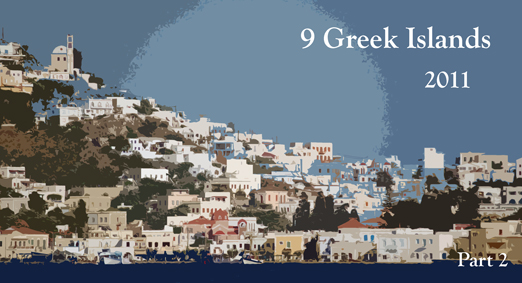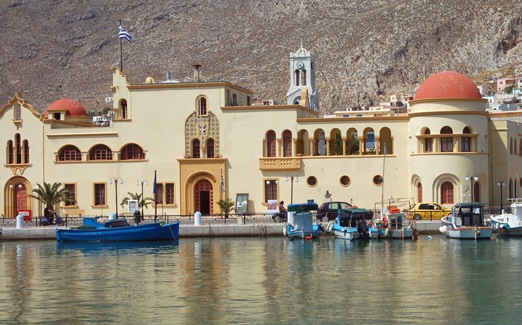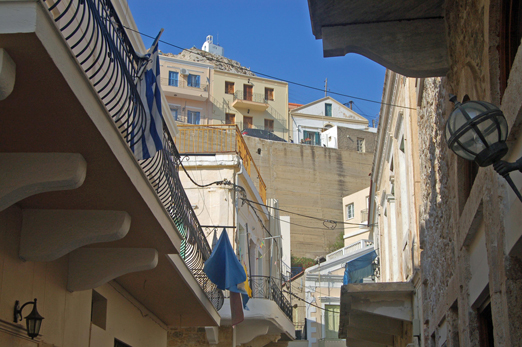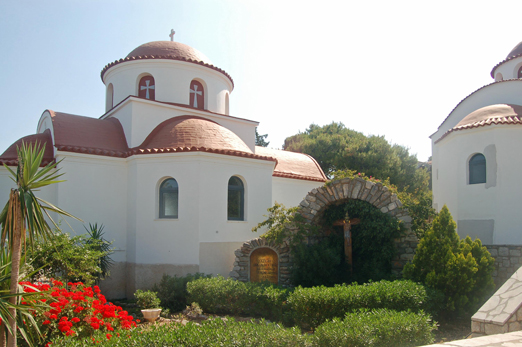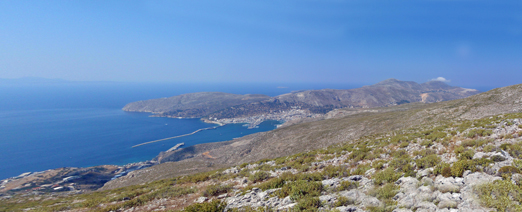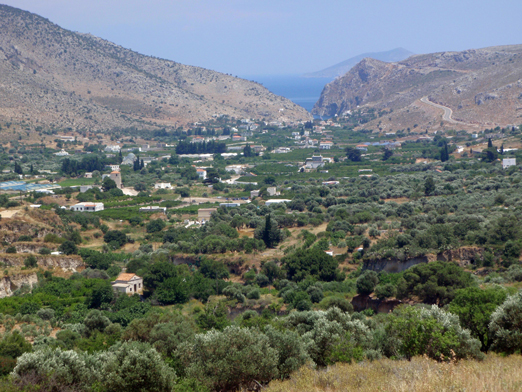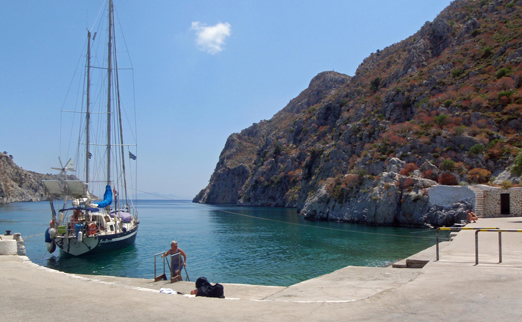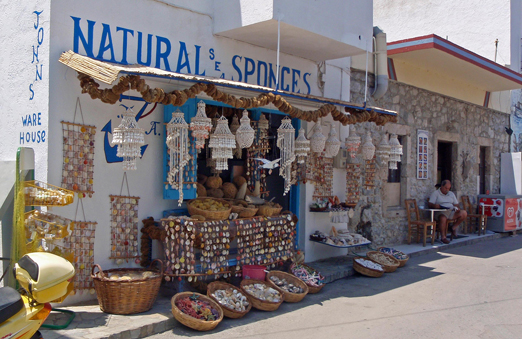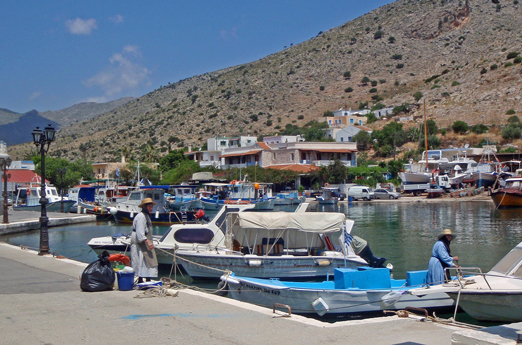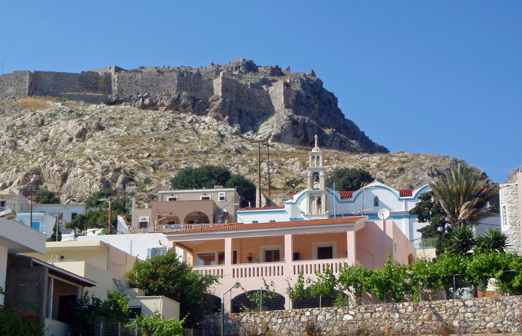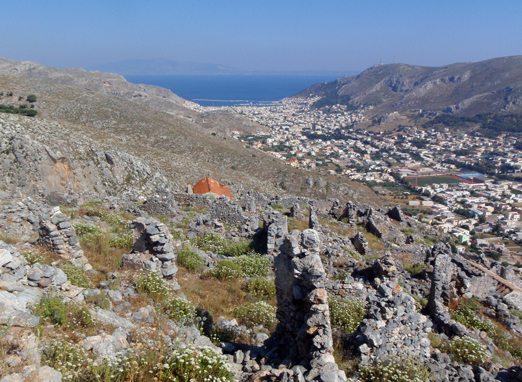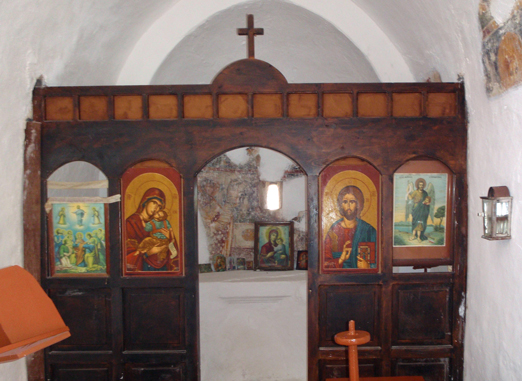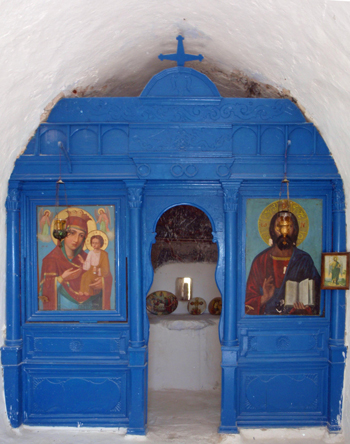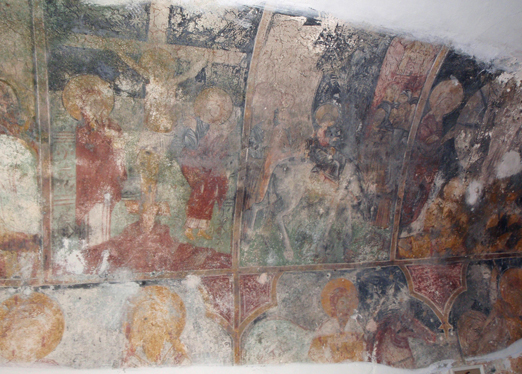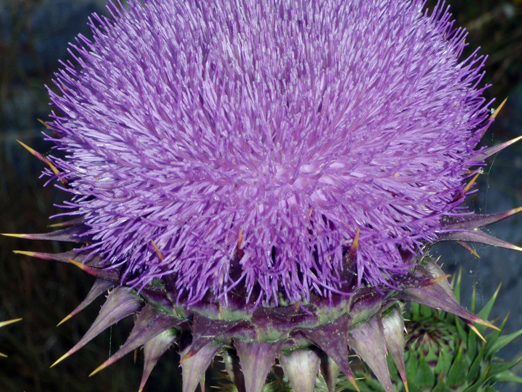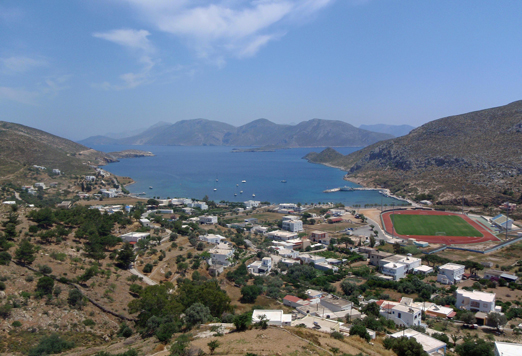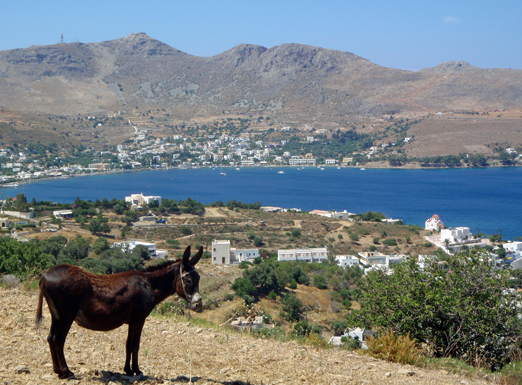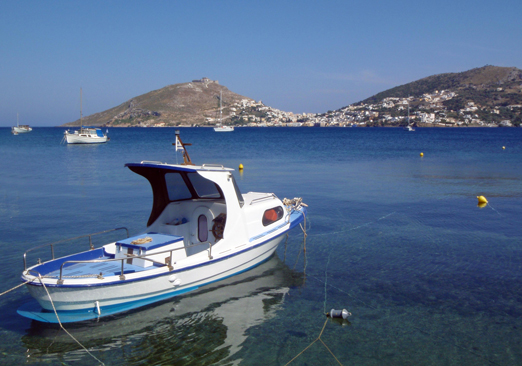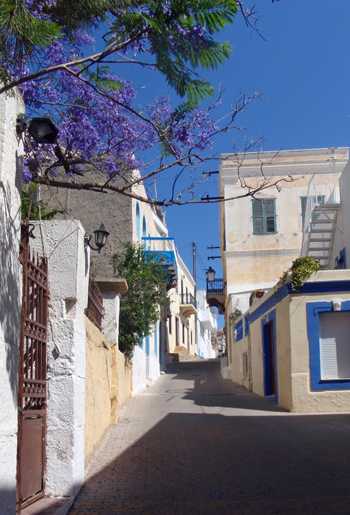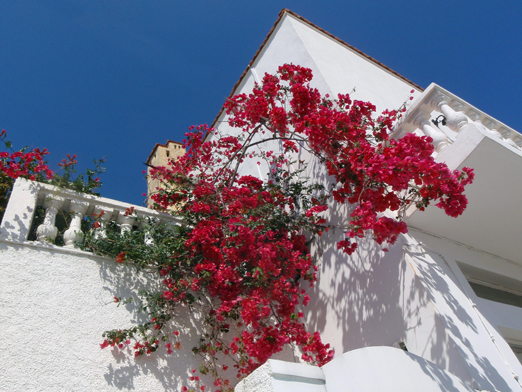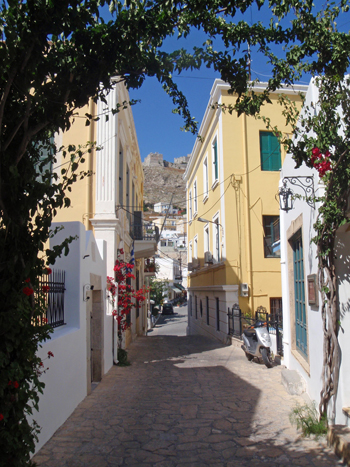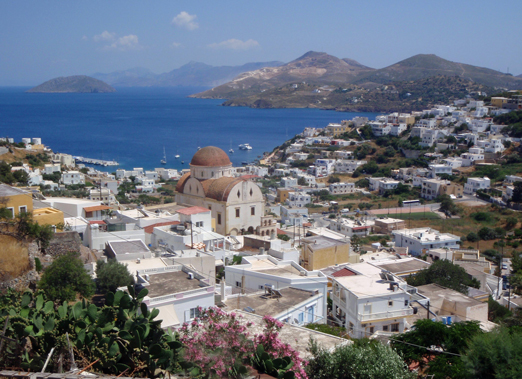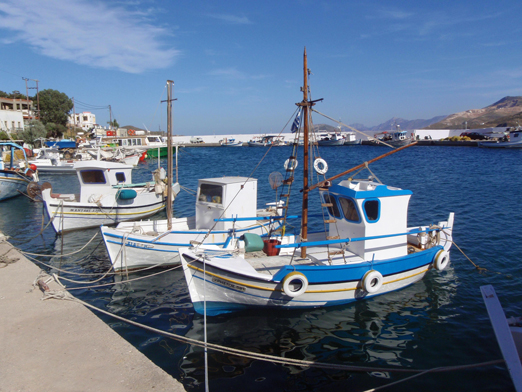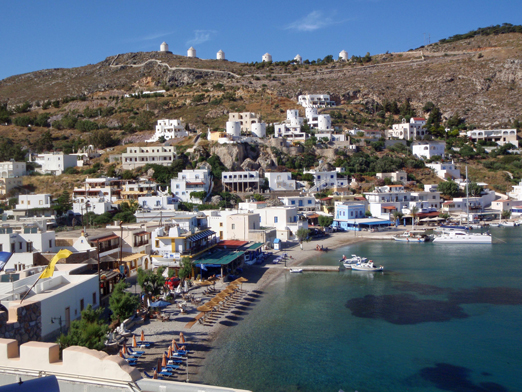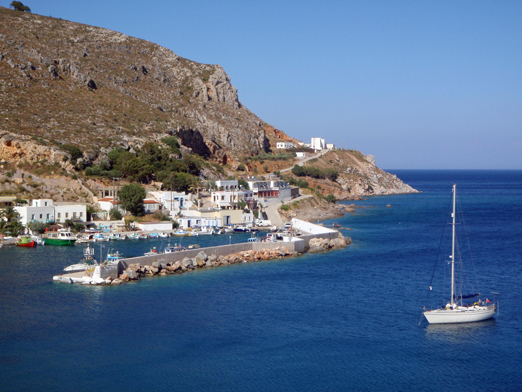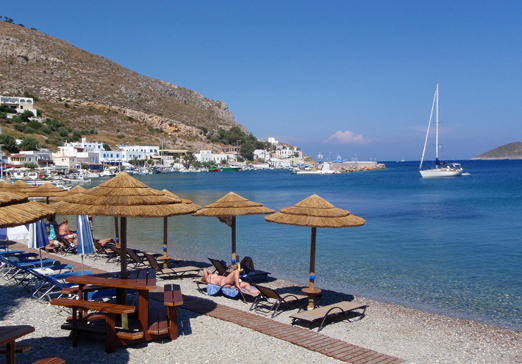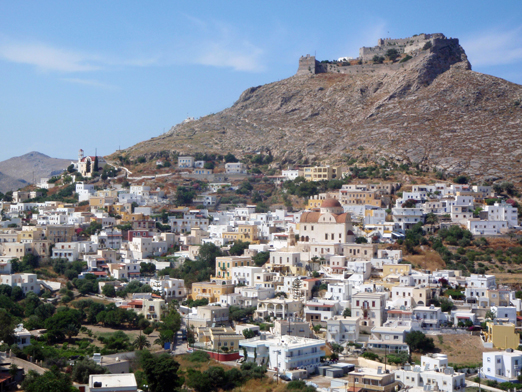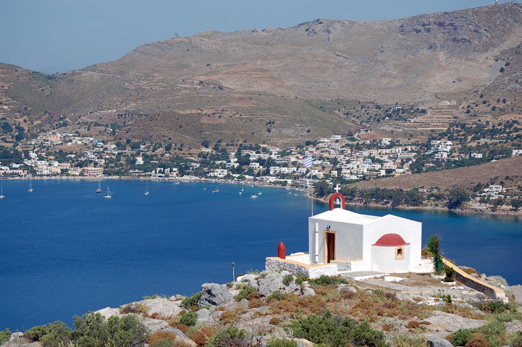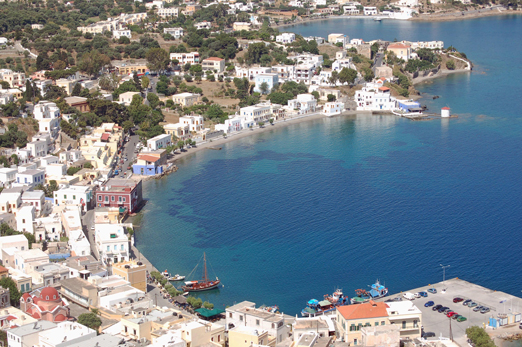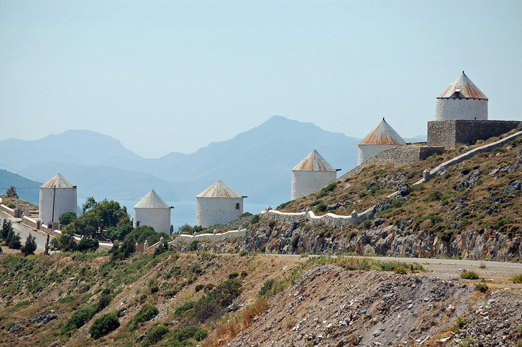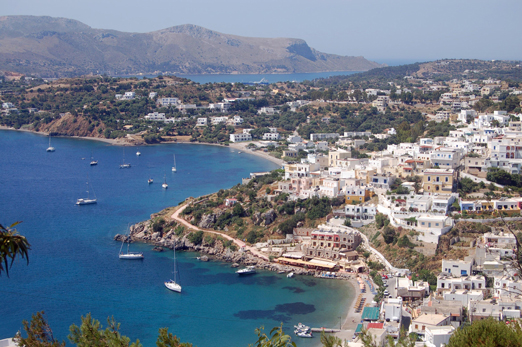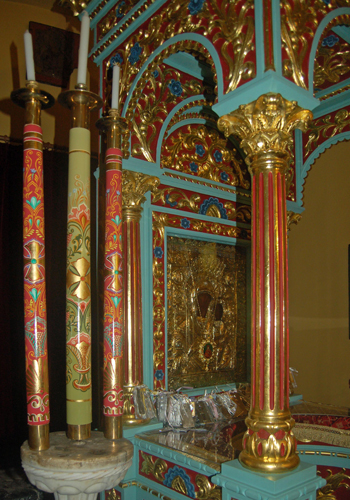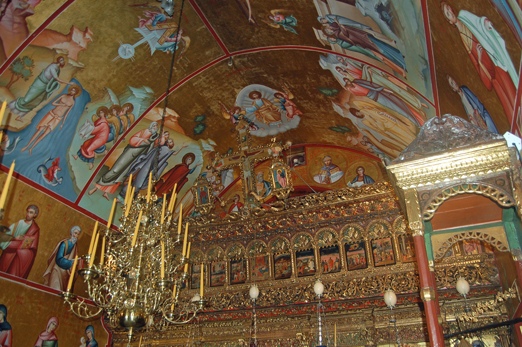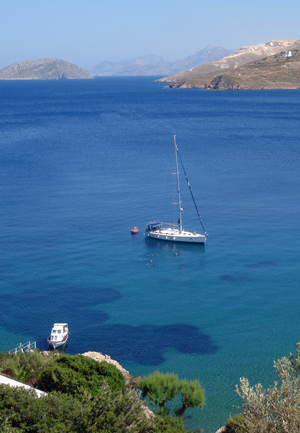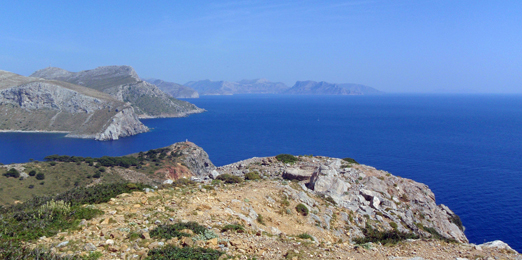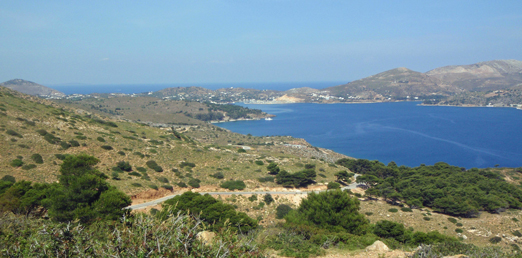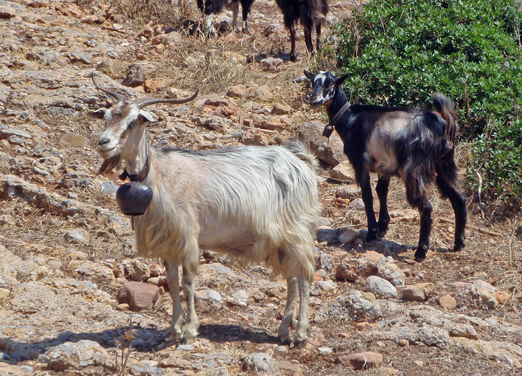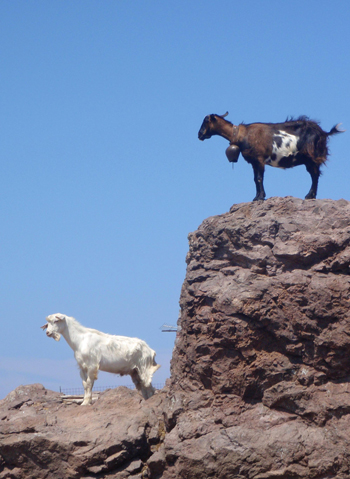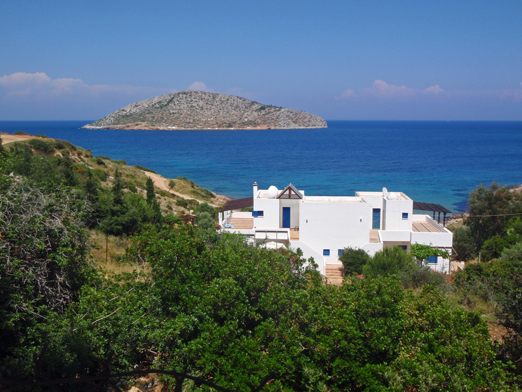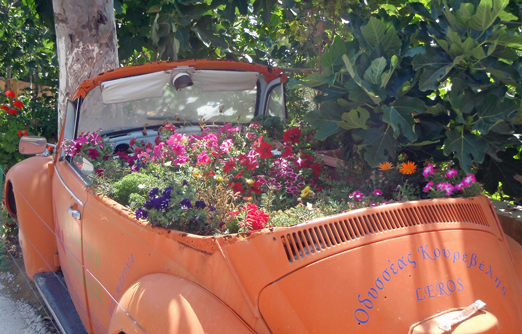The island of Kalymnos is visible from Kos, it was just a short motoring trip over to where we moored alongside some friends on the town dock. We are now getting more confident with doing it the Mediterranean way and as there was a low wall separation between the boat and passers-by we conceded to try it…-not altogether happily…
Kalymnos
Although so close to Kos, it doesn’t share the same problem of being ‘over-touristed’,
(however, some of the Gulets passing through the port may give cause to think otherwise!),
it retains much of its old charm that it once had as one of the major sponge producing islands, they are still collected and sold fresh on the waterfront.
The town is steep and picturesque,
but the surrounding island is developing a reputation as a place to go walking, rock climbing and outdoor stuff.
The Italian Track (named after the builders) goes from the middle of the town over the 3-400 metre hills
to the little sponge gathering village of Vathys,
nestled around a tiny fiord-like harbour at the end of a remarkably fertile valley.
It makes for an excellent, secluded anchorage for a yacht, -there is only room for one!
and the sleepy little port-side village is a delightfully friendly place
with excellent seafood and cooling tavernas to rescusitate following the walk.
After doing so, I unsuccessfully struggled to find a return route over the top of Mt Profitis Ilias, but had to retrace my steps over the Italian track and approach it from the other side, the town side,
but was still unable to find a route without bluffs before running out of day-time.
Instead I explored the ruins of the Pera Kastro, a pirate-proof village built high up on the hill as a refuge from the buccaneers of the middle ages. It has near perfect natural defences from any approach by land, with precipitous cliffs, high rock walls, and access by means only of a single set of very steep steps.
It would be very easy to roll rocks down onto anyone daring to approach from the town!
The little citadel was occupied as needed until the 18th century and frequently used under siege, the ruins are of cottages, now, mainly tumbled rocks,
but the walls and the six, 15th century Christian chapels have been restored, the old interiors (and frescoes) protected from the harsh climate outside.
This is a project undertaken by the ministry, but now little maintained and without caretakers or fees charged, the chances are that it will soon revert to all being the rocky ruin it was once before.
Kalymnos had many other opportunities for walking, but time prevented further exploring.
As the next island on out list was Leros, to the north, we had to make the most of a relatively windless day to make the move.
The Greek Islands were living up to their reputation as being a windy place, where there are 2 wind speeds, zero and too much, and when it comes, wind is always from the north, -we had to take any favourable chance to move up the island chain.
Leros
Despite choosing a quiet time,it wasn’t altogether easy going into the wind getting around Kalymnos and into Leros, we stopped in the relatively sheltered, but still gusty bay of Xirokambos, the southernmost of Leros.
From there we could walk to much of the island, but still, as soon as the opportunity arose, moved to be more central, up into the wide, windy, but out of the way of other yachts and big sea, Alinda Bay.
There we stayed, anchored out, for some time, -and returned at a later date, we enjoyed it so well.
Being central, the whole island was within easy walking distance of our Alinda anchorage. The town of Platanos with its steep steps and alleys just on the other side of the bay, dropping on the Alinda side to Agios Marina and on the other, to
the fishing town of Pandeli, which is, over the hill, tucked in the lee of a very sheltered little bay.
Pandeli
We had found a wonderful spot for lunch out of the breeze…
On the hill above all 3 town localities is Pandeli Castle, partly dating back to the 11th Century
with commanding views over the island, best seen (and climbed to) in the cool clear air of the early morning.
The view is free, but as its centrepiece is a magnificently restored little church in the most ornate of Orthodox style,
carefully guarded by the most friendly of elderly Greek women and she only charges a Euro entry fee…
Further south on the island there is the beautiful, but usually busy and not always secure anchorage of Vromolithos,
then further on is the main port town of Lakki, on a large, natural harbour.
It has a decided Italian air having been built under Mussolini during time of Italian occupation during the years after 1912.
There’s an old mental asylum, a war museum, and on on Mt Patelia above the harbour beyond,
bunkers and gun emplacements left over from WW II. This was the site of a quite decisive battle in 1943 when the Germans took it off the Italians and British, -said to be the inspiration for Alistair MacLean’s ‘The Guns of Navarone’.
Although the most of the island is relatively well-off and agriculturally productive, (as far as Greek Islands go!) to the north it is barren goat country…
but there are some very smart houses in secluded little coves, with clear blue water, ideal for swimming and sunning…
We enjoyed Leros a lot, such that we came back on our return, but before then, there were places to go north to see.
